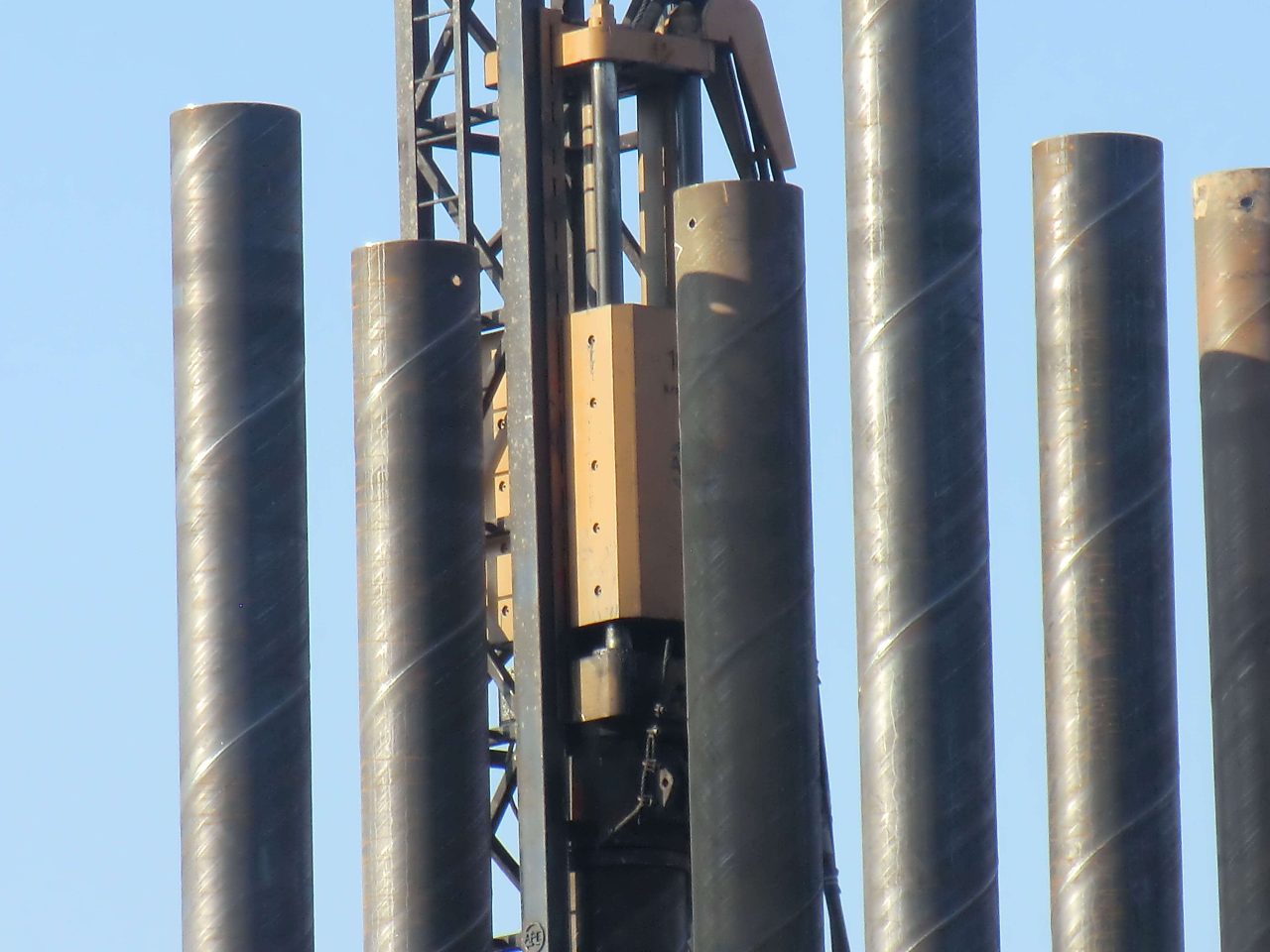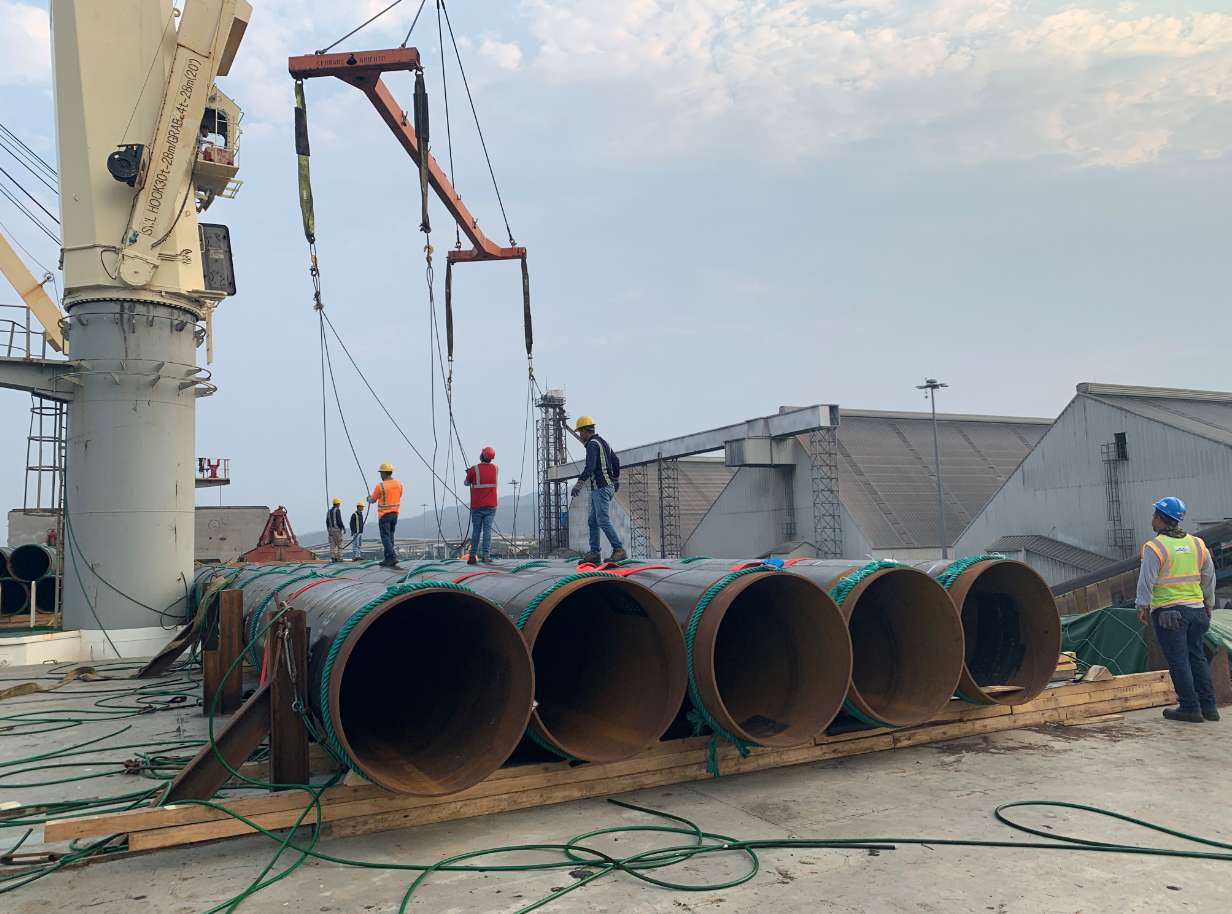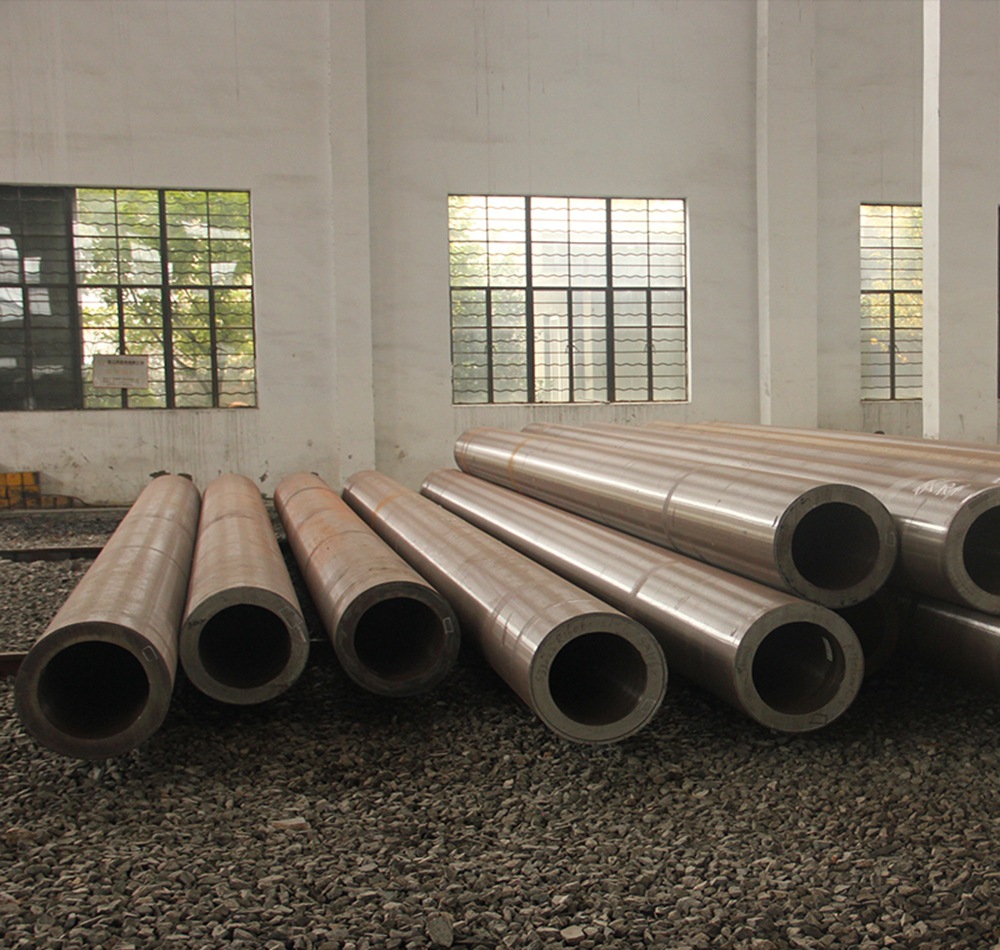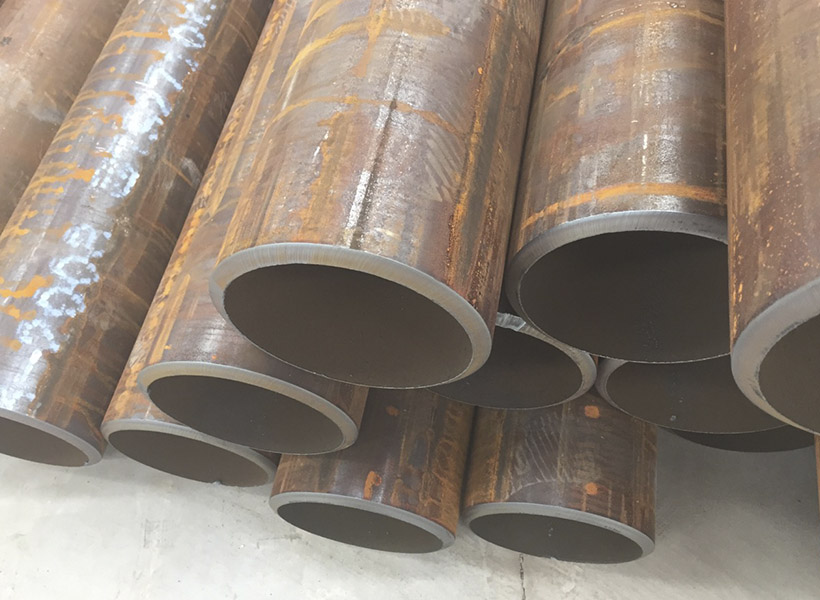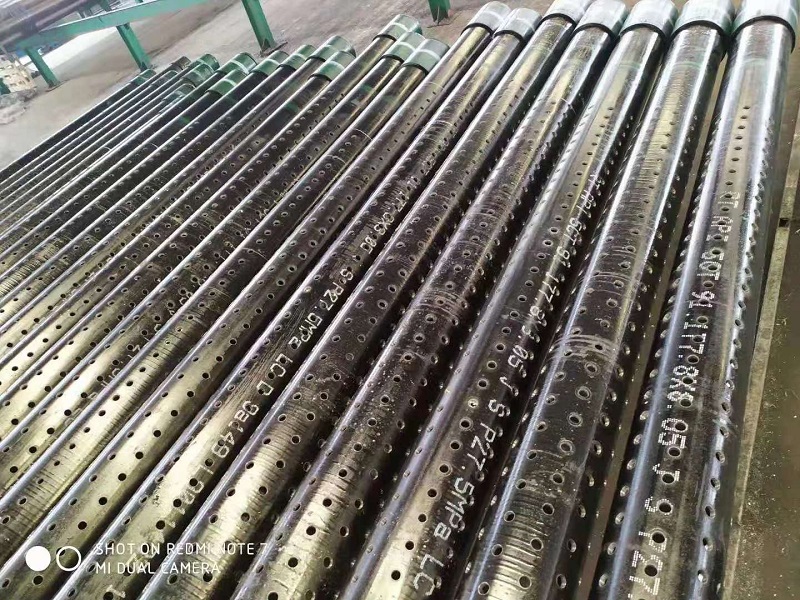Introduction
Vibratory driving provides an important installation method for steel pipe piles that is faster and safer than traditional impact hammer driving. However, subjected to complex dynamic soil-structure interaction during oscillatory insertion, pipe piles are susceptible to instability buckling failures that can prevent reaching terminal depth. This study aims to numerically evaluate buckling behavior using finite element analysis with calibrated soil models, paving the way for improved guidance on pile dimensions, soil conditions suitability, and driving controls.
Buckling Mechanisms
Several potential buckling modes exist during vibratory installation depending on soil properties and driving parameters. Global buckling involves lateral deformation along the entire embedded length, driven by soil resistance that exceeds the critical buckling capacity. Local buckling causes inward buckling of the pile wall at depths of stress concentration. Existing empirical design equations do not account for transient mechanisms including:
- Inertial effects from oscillatory excitation frequencies
- Strain-rate dependent soil resistance variations
- Cyclic lateral soil loading and unloading
Numerical Modeling Approach
To elucidate these complex interactions, a dynamic finite element model was developed using ABAQUS. The steel pile geometry included a 600mm diameter, 20m long pipe element modeled with shell elements. The surrounding soil volume extended laterally 20m and to 30m depth, meshed with 8-node 3D solid elements. Interface elements along the pile-soil boundary accounted for dynamic frictional loading. Initial geostatic conditions for the 10m thick clay layer were defined using soil parameters from triaxial tests. A cylindrical soil plug was embedded within the pile representing remolded soil. Buckling behavior was evaluated using dynamic implicit solutions as the pile was inserted under predefined vibratory excitations matching offshore systems.
Data Examples
Example datasets included:
- Installation field trial log of pile resistance, stroke, insertion rate vs depth
- Pile dimensions, material properties, soil test results at trial site
- Excavated piles displaying buckling modes and soil conditions triggering failure
- Downhole instrumentation measuring soil pressures, accelerations during driving
- Post-drive inspection using techniques like 3D laser profiling to capture geometries
Comparing field monitoring to numerical model outputs aimed to validate simulation capabilities and calibrate soil behavior definitions.
Example Results
Simulations of a pipeline pile driven through stiff overburden clay to bearing sand stratum using measured soil properties are shown in Figure 1. Global buckling occurred at 12m due to sharp resistance increase. Local buckling initiated first around 4m depth where stresses peaked in a bulge correlating with a field pile excavated at the site. Dynamic soil pressures developed along the pile during each cycle consistent with field sensor data.
Figure 1. Buckling results showing (a) pile shape, (b) soil pressures
at 4m depth cycle
Comparisons and Validation
Key validations included:
- Buckling depths matched within 0.5m between modeled and excavated piles
- Field and model soil pressures agreed to within 15kPa over depth
- Dynamic resistance trends over cycles were consistent between field trials and models
Sensitivity studies then explored buckling behavior dependence on installation parameters like stroke magnitude/frequency as well as on soil type. Optimized driving was evaluated to prevent buckling failures within limiting conditions.
Conclusions
Numerical modeling proved capable of capturing dynamic buckling phenomena in steel pipe piles undergoing vibratory installation. Soil-structure interaction effects were revealed through direct comparison with field monitoring data. With further refinement, the validated approach can optimize pile dimensions, assess installation suitability, and develop dynamic driving controls – enabling safer, more efficient vibratory driving of pile foundations.

